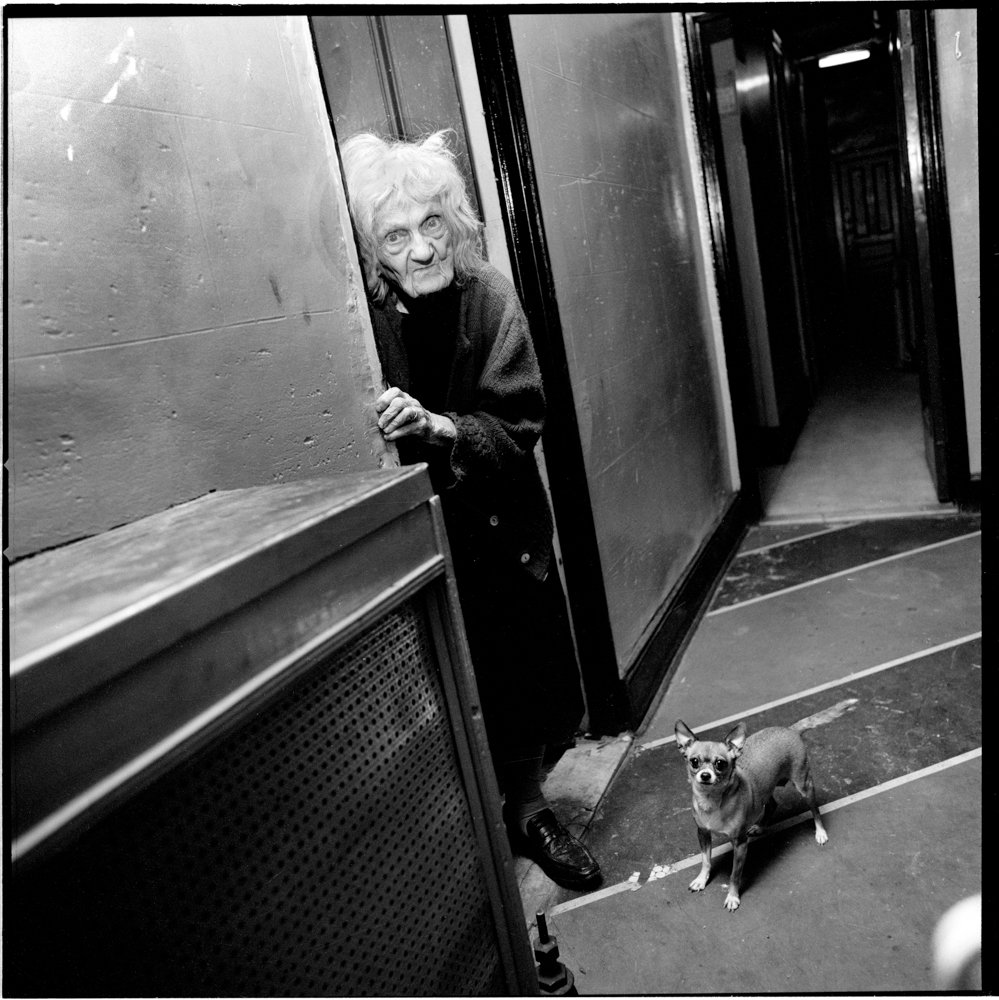Single Room Occupancy
Single Room Occupancy: My first paying job as a photographer was working on the photos that later came to be published under the title of Neighbors on the Block - Life in Single Room Occupancy Hotels- An exhibit portfolio produced by the New York State Council on the Arts for the New York Museums Collaborative of the Cultural Council Foundation.
I had been hired as a research assistant for by the department of Community Psychiatry at St. Luke’s Hospital. My first assignment was to become a tenant in one of the hotels that was part of their study. In March of 1969 I moved in to the Valencia Hotel on west 95th Street between Riverside Drive and West End Avenue. St Luke’s was working with the school of social work at Columbia University and was interested to try to improve the social services provided to tenants in these buildings. To do that they needed information about the people living in the hotels and how their needs might be met.
My job was to gather information very much like a census taker about the SRO community. As a way of getting to know the people and creating a relationship with them I began making photographs which I would then give back to them. I also was able to organize and run along with Peter Barton a film workshop program for tenants in some of the Single Room Occupancy Hotels. This led later to my making with Peter Barton of two documentary films - Eddie and Alfred, which tells in more detail the stories of two of the tenants I met in the course of film workshop programs.
Looking back thirty-four years later at the photographs I find them still meaningful and with stories that still resonate.
- Laurence Salzmann July 14, 2004
Eddie:
A film by Peter Barton and Laurence Salzmann was one of the first recipients of an American Film Institute Grant, 1971 (15 minutes).
Eddie O'Brian was an alcoholic living in squalor on West 94th Street. He was, like many of his neighbors in the hotels, dying. "I can't actually afford both eat and drink, too," he said. His mind was fragmented, his speech stuttering, half-incoherent.
The documentary's narrative is built around a simple, ominous event: Eddie's last friend Sam, is being thrown out of the hotel and reinstitutionalized. Sam can't walk to the toilet any more and has been soiling his bed so they.re throwing him out. To Eddie, this eviction is not just to the hospital but to the cemetery. He knows Sam isn't going to ever resume life outside the institution. Down both go to the elevator, which is used in the movie as a metaphor, a descent into hell.
Eddie has spent his life searhing for connection. Molested by a priest when he was a child, he joined various groups – fascist, neo-Nazi, communist, über-Catholic - in search for a sense of belonging. He said, "I wanted to be part of something. People for some reason just don't like me so I stayed to myself. I walked miles on end trying to get away from myself..."
The climax of the movie is brilliantly editied experimental montage that attempts to mirror the disintergration of Eddie's brain through overlapping audio track and traumatic, quick imagery. The film is shot in grainy black-and-white that mirros the soupy light in Eddie's tiny room.
Alfred:
A companion film to Eddie (29 minutes) is shot in a crisper black and white and reflects its subjects looser, sunnier disposition. An African- American graduate of New York's elite Stuyvesant public school, Alfred spent 25 years in a mental institution before being released. It was no surprise that he was unprepared for unregimented daily routine and was soon eating out of trash cans because he'd given his welfare money away to Lil, a junkie prostitute, who would service him once every two weeks and then disappear. The narrative arc of the movie is Alfred's odyssey in search of Lil, his "lost love."
Heartbreakingly romantic, Alfred Cady would chase after his "sweetheart" with little success until the next check day, when she would magically reconcile in time to agian lift all of his money. While Eddie is grim and gloomy, Alfred is sunny, singing and playing his empty stomach like a conga drum. The shots of him eating hot dogs from the trash or scavenging outdated meat from a special garbage truck are devastating.
Salzmann and Barton concluded that to affluent society, Alfred WAS garbage, so they followed sanitation trucks all the way to the pier where they're emptied and made those shots the signature of the movie. Both award-winning films, completed in 1969/70, were groundbreaking in subject matter and technique. They profile Invisible Men, castoffs of society whose spirit, wit, and courage still shine out and touch the world that would for the most part not care to acknowledge them.



















